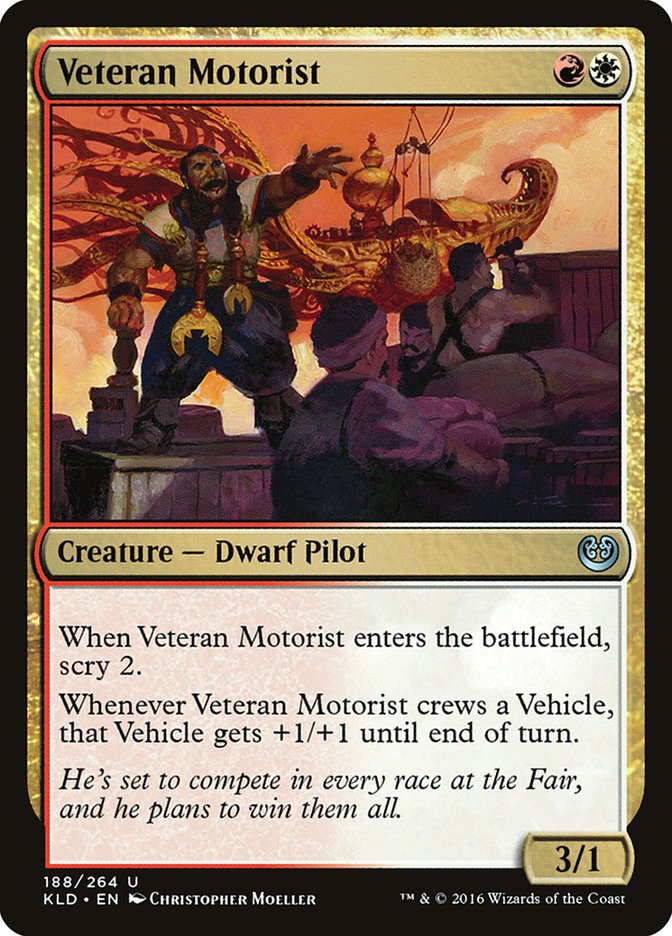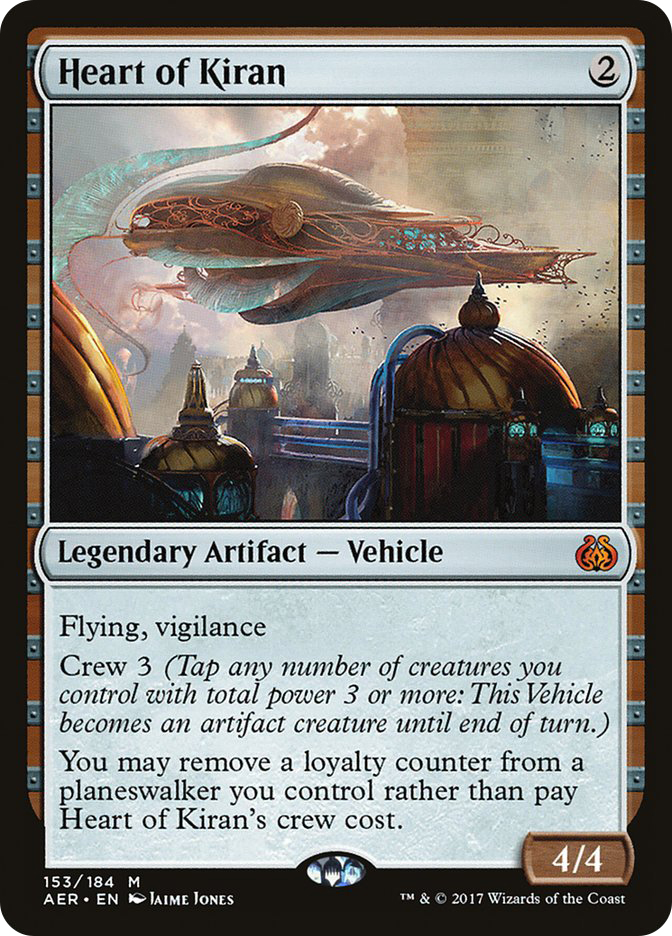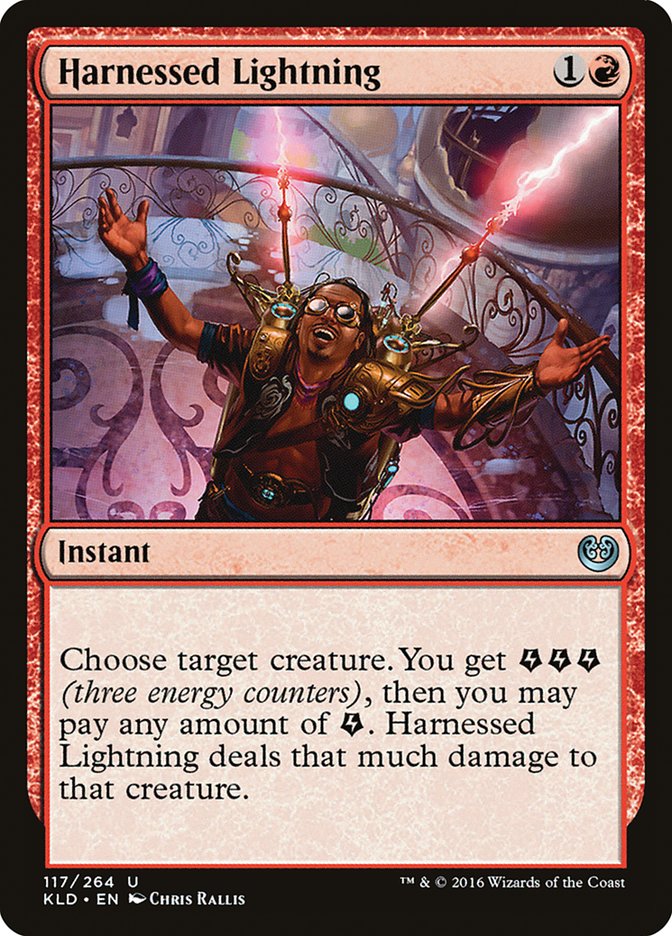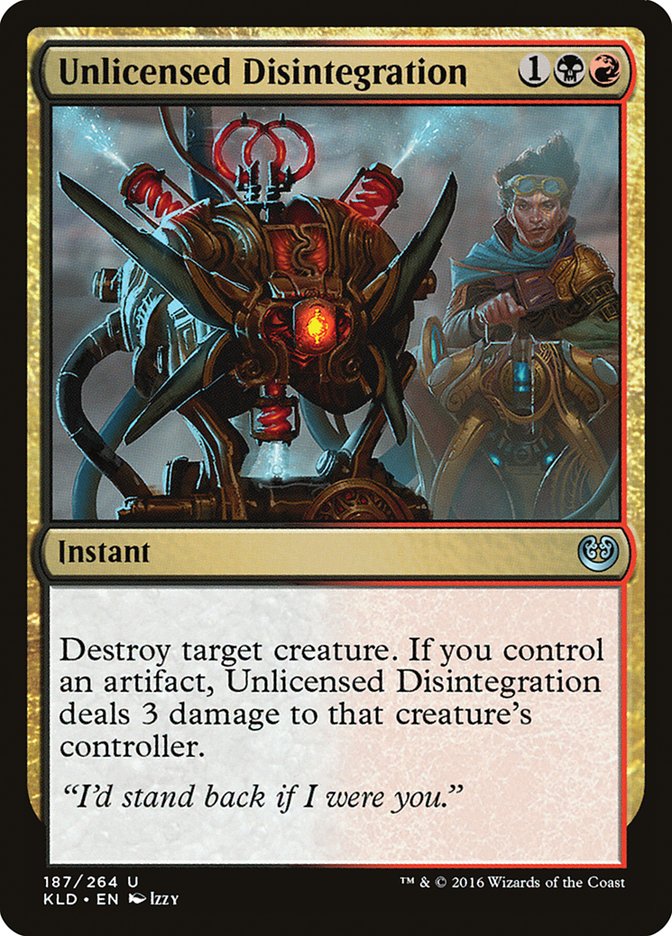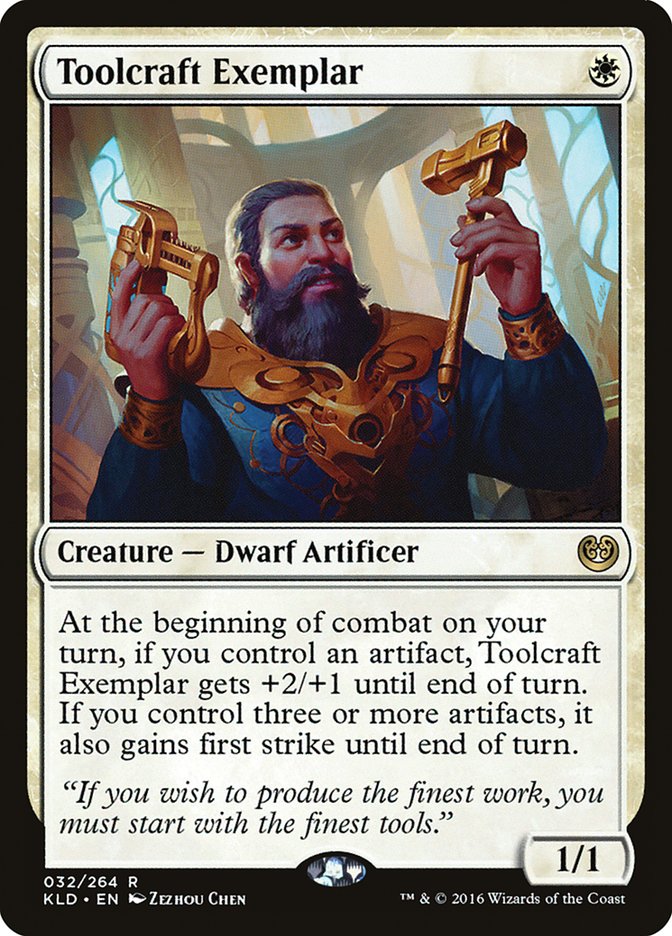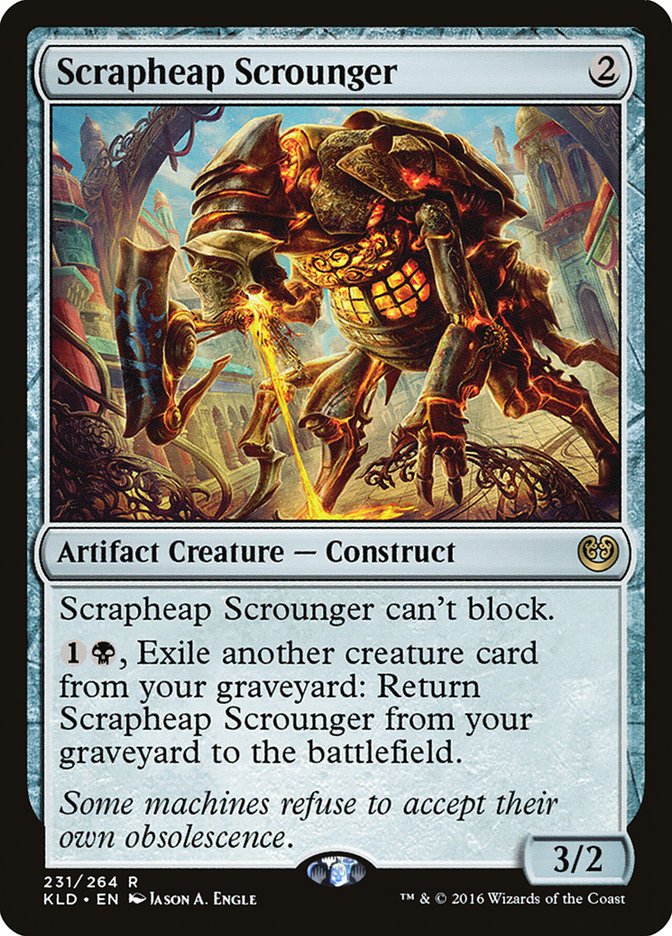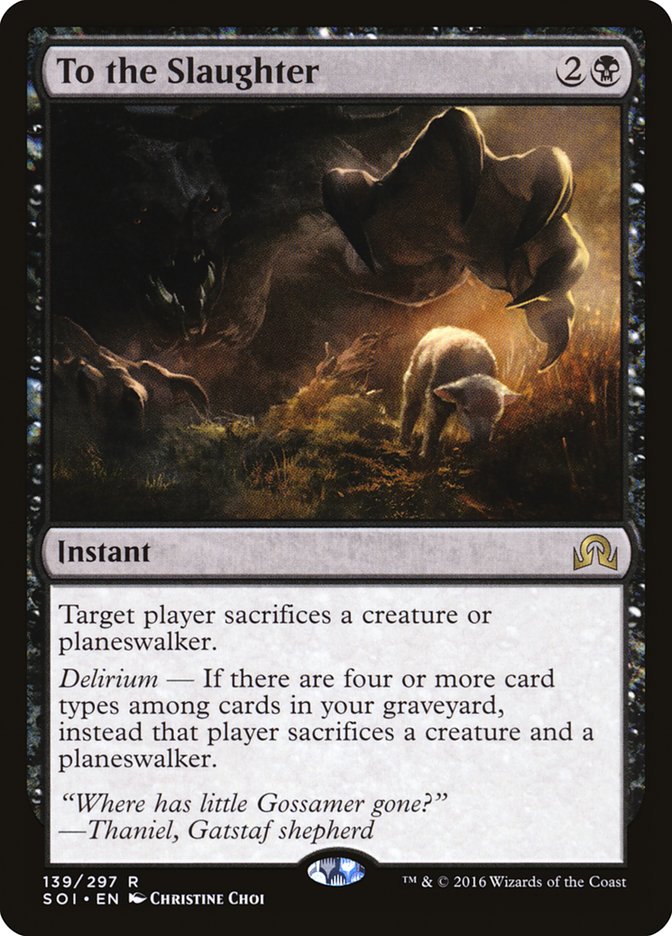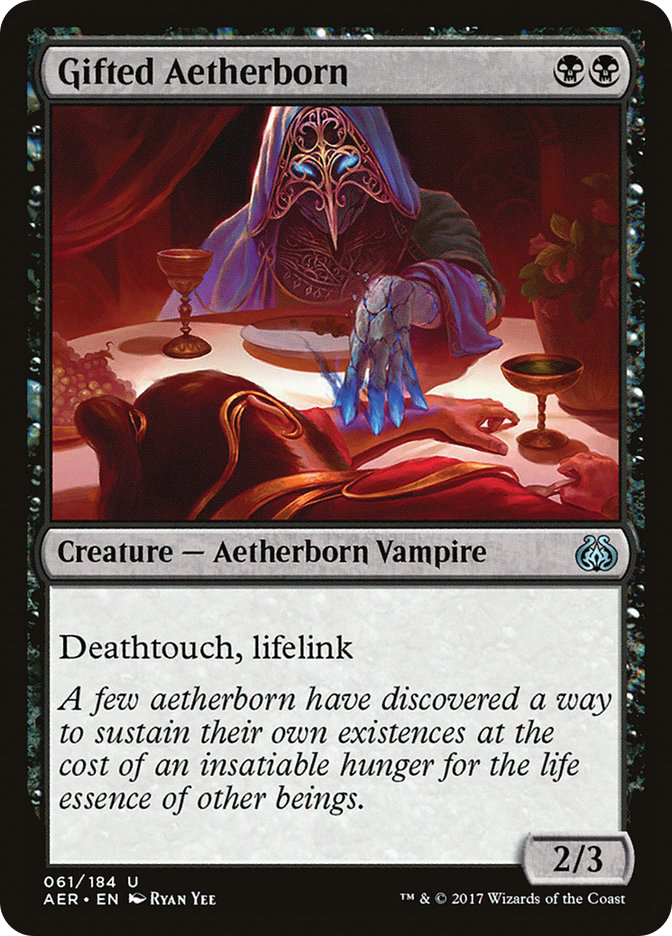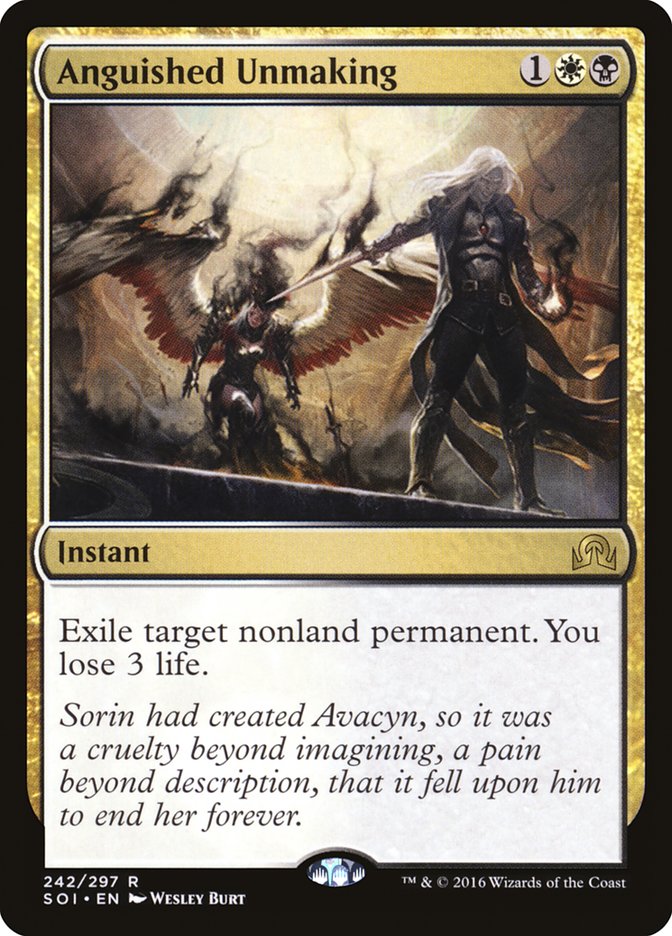While it’s true that Standard is currently a (mostly) two deck format, I don’t mind it. Sure, the die roll might matter too much; Gideon, Ally of Zendikar and Felidar Guardian are oppressive; and there’s a distinct lack of diversity, but so what?
The games are complex and (mostly) rewarding, and while there aren’t many actual archetypes, there is no shortage of room to put your own particular spin on your favorite archetype. Standard might consist of B/G, Saheeli Combo, Mardu, and Torrential Gearhulk decks, but there’s enough diversity among them to make it feel like there are twelve archetypes. They just happen to share mostly the same core.
While the format lacks diversity among how many different decks there are, there is always tinkering to be done within the archetypes, which I’m obviously a huge fan of.
There are also some good lessons to be learned here.
Why Not Veteran Motorist?
Mardu used to be a linear aggressive deck. Once that changed, Mardu went from a playable deck to arguably the best deck.
Part of being a deck that has a transformational sideboard plan is having bridges that you can play in the maindeck. Walking Ballista takes that role, and it takes up the space in the maindeck that Veteran Motorist occupies.
It’s not just one of those “I can’t find slots” or “there’s no room” excuses that I hate, either. You could potentially play both, since they both work at preventing flooding, yet they work in different ways that conflict with each other. In addition to them being parts of different gameplans, they also have a lot of negative synergy, as scrying lands to the bottom means your Walking Ballistas will be worse on average.
The threat of Walking Ballista to one-toughness creatures is somewhat overstated, especially when Winding Constrictor isn’t involved, because trading one-for-one is hardly a horrible deal. However, it does put the onus on the Veteran Motorist player to close the game quickly. That means you don’t have the liberty of sideboarding into a more controlling deck, mostly because you’re committing additional cards to your maindeck that can’t facilitate a transitional plan.
Veteran Motorist by itself isn’t bad, but it does mean you have to build Mardu as an aggressive deck and mostly keep that intact post-sideboard. Building Mardu as an aggressive deck is certainly a viable strategy, but one that I think has proven to be less effective than one that has some room to maneuver. Staying aggressive could potentially level the mirror, but if they end up having a good plan for you, you could be sunk and out of options.
What Makes Mardu So Good?
We learn time and time again that one of the most powerful things you can do is have multiple plans. Mardu is one of those decks that has a high concentration of good cards at every spot of the curve, with a variety of cards that accomplish different goals. If you need your Mardu deck to accomplish a certain goal, it’s pretty unlikely that you’ll be able to do so.
There are no clear weaknesses, and whatever weaknesses Mardu seems to have can be alleviated by shifting roles while sideboarding. Not every single deck should do this, but if you’re a linear aggro deck with some midrange elements, going a little bigger post-sideboard is almost never a bad idea.
Post-sideboard games tend to get grindier as players sideboard in more removal and both players end up with configurations tailored toward their opponent. That means there are fewer dead cards on each end, cards trade one-for-one more often, and games will go on longer. Not being prepared for that sort of slugfest is a mistake.
In a world with Fatal Push and Unlicensed Disintegration as the removal suite of choice, and the fact that most decks play twenty-ish creatures, it’s likely that Game 1s start to resemble post-sideboard games. Going bigger is Game 1s is now the name of the game, which is why Mardu moved back to four Gideons maindeck and fewer one-drops in the first place. Now there are more and more Archangel Avacyns creeping up in maindecks.
There’s an arms race and Mardu is currently winning it, hence it gaining the title of “best deck.”
The 1-5 Issue
Mardu isn’t perfect.
One of the major issues with a midrange deck masquerading as a beatdown deck is attempting to curve out. Without a solid curve, Mardu fails as either an aggressive deck or a midrange deck.
There are also the interactive cards like Fatal Push and Unlicensed Disintegration that don’t necessarily contribute to you using your mana efficiently. There are some decks that Fatal Push is dead against, and your opponent won’t always give you a great target for Unlicensed Disintegration. Drawing a copy or two of removal is fine over the course of a game, but drawing multiple copies early is often disastrous, especially if you can’t follow it up with a Gideon or something else powerful.
Another issue is that sometimes you draw Toolcraft Exemplars and cards that don’t really work with that plan, like Arch-angel Avacyn. The old “speed it up, slow it down” strategy is rarely effective. There is a lot of merit to putting pressure on your opponents, which forces them to react to you. When you’re on the back foot, Gideon, your best card, is much weak-er.
The hope is that the chip damage from Toolcraft Exemplar allows you to close the game later. After all, it’s much easier to find a way to deal ten points in a close game than deal the full twenty. When you start drawing your cards in the wrong order is when it gets ugly.
To top it off, you also have to contend with awkward draws that have no artifacts.
I definitely don’t want to be fine skipping key turns in my deck that is going to draw Toolcraft Exemplars at some point. They already don’t block very well, so not being able to follow up their aggression is another danger in building your deck in a disjointed manner. I love Archangel Avacyn and I think she’s quite good, especially now, but the further you stray from cards that make Toolcraft Exemplar good, the more you exacerbate those issues.
Your choices are constrained by what you can afford to play around. Having cards like Scrapheap Scrounger and Toolcraft Exemplar means you rarely have the luxury of playing around much when it comes to the late-game. You have to end it, and having an early Toolcraft Exemplar will help you actually win more games than playing the midrange deck in your maindeck.
Hoping you can curve out fully is difficult in Game 1. If you mulligan, are on the play, or both, then it’s nearly impossible. If Mardu is exploitable, it’s because of this.
I have way more fun playing the post-sideboard games with Mardu. Post-sideboard, you should hopefully have a configuration that’s smooth.
Is Mardu Vehicles the “Best Deck?”
At times, the answer has been a resounding yes. It and Four-Color Saheeli are the only nonlinear decks in the format, and that gives it a huge edge. At this point, even adapting to their post-sideboard plan merely puts you back on even footing. Their card quality is so high that, even if you’re attempting to beat them in their grindy plan, they can and probably will sideboard back into beatdown on the play and hammer you.
The only saving grace, if you can call it that, is Four-Color Saheeli. It has the tools to delay aggression until it can piece together the combo and also fight on the midrange front. It might not be a perfect world, but it’s what we got.
To the Slaughter could be great right now, and could even potentially be the next shift in the metagame, but due to a lack of big tournaments, we won’t see that happen.
Amonkhet is likely the most-anticipated set release in a long time. Some big stuff is going to have to happen to de-throne Mardu Vehicles and Four-Color Saheeli.
Are There Really No Other Options?
Well, funny thing…
Creatures (19)
- 1 Ayli, Eternal Pilgrim
- 2 Kalitas, Traitor of Ghet
- 3 Archangel Avacyn
- 2 Thalia, Heretic Cathar
- 3 Scrapheap Scrounger
- 4 Gifted Aetherborn
- 4 Walking Ballista
Planeswalkers (6)
Lands (25)
Spells (10)

Another Gideon deck? I know, I know. In a sense, this is just another evolution of Mardu.
Moving away from Heart of Kiran in these decks makes sense to a degree. Release the Gremlins is everywhere, so Heart of Kiran is often just a Game 1 card. Moving away from Toolcraft Exemplar entirely certainly limits Heart of Kiran’s usefulness too.
Having Gifted Aetherborn offsetting the life loss from Anguished Unmaking gives you a phenomenal answer to the various problematic cards in the format. Kalitas, Traitor of Ghet is another potential mirror breaker. Transgress the Mind is perfect for shoring up fringe matchups like Temur Tower and the various Aetherworks Marvel decks out there.
For the last few weeks of PPTQs, I would stick with Mardu Vehicles or Four-Color Saheeli, but if you want a change, options exist. B/W Midrange is an excellent place to start.
Is Having Mardu as a Best Deck a Good Thing?
The real question in all of this: “Is it okay for Mardu Vehicles to be the best deck?”
We try to fight it, ultimately come up short, and walk away from the whole experience feeling unsatisfied. The games are interesting to a point, but losing straight-up to a Gideon, Ally of Zendikar isn’t a particularly rewarding feeling.
Overall, I would say that it’s fine, if not actively good. Mardu is mostly beatable, although, because of the powerful of their cards, you probably won’t be able to make a deck that absolutely crushes it. It just becomes the litmus test for the format. Something has to be the best, and that something is ultimately going to draw some scorn. It’s inevitable.
It’s weird, though. In addition to something having to be the best, the cards themselves have to be compelling. Maybe Gideon is the wrong kind of compelling because the card is only attractive based on power level, but even in a perfectly balanced format I wouldn’t be particularly excited to register for a tournament where I didn’t have something I was invested in. I want to be connected to the deck, strategy, or a card I’m playing with.
Here’s to hoping that future formats find a way to strike that delicate balance.
I’m sure I’m in the minority here, but I enjoy this Standard format. My secret? I typically look for things to enjoy rather than things to hate. Despite enjoying Standard, I’m not a fan of the recent non-ban. Just because I’m enjoying myself currently doesn’t mean that others are. Then again, I don’t think there’s ever been a format where people didn’t complain, so it’s difficult for me to parse at times.
You don’t like losing to Emrakul, the Promised End or Smuggler’s Copter, eh? What about Gideon and Saheeli Rai? If those went, it might be Torrential and Verdurous Gearhulk. Maybe it is the fact that there aren’t enough good, clean answers to things and people don’t like feeling like they’re losing to one card straight-up.
Maybe that’s reasonable. I can’t help but think of all the times people complained about Hero’s Downfall being too good. After all, no one likes making a big mana investment, only to have it immediately dealt with via Vindicate.
Not everyone is complaining, as some people are providing criticism. Criticism itself is helpful, and if you’re not having fun, you should absolutely voice your opinion. However, it should be noted that how you go about giving your criticism does matter because it affects whether your voice will actually be heard.
That said, here’s my tough love for the year: Instead of complaining, learn how to operate within the parameters you’re given. Don’t complain; do work. I promise you’ll be happier as a result.


